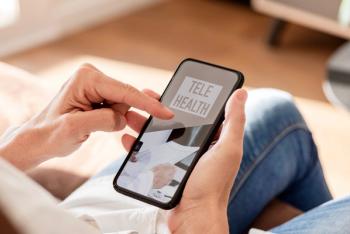
Using telehealth for a more effective continuum of care
CCM and RPM can improve outcomes, the patient experience, and your bottom line.
The COVID-19 pandemic might actually have been just the push the healthcare industry needed to finally implement the wide-spread use of telehealth, a measure which can both save the industry billions each year while enhancing outcomes and the patient experience.
Prior to the pandemic, many physicians had the intent of eventually implementing telehealth on a larger scale, but they lacked incentives to take action. CMS limitations on the use of telehealth along with lack-luster payer reimbursement meant the effort was greater than the reward. But that has changed now that the CMS has relaxed guidelines and increased payments for telehealth appointments, at least for the time being. That, in turn, has opened the door for additional financial opportunities such as chronic care management (CCM) and remote patient monitoring (RPM)—both of which have been assigned new codes and expanded guidelines.
Leveraging CCM and RPM can dramatically reduce hospitalizations and ER visits by patients with chronic conditions, which improves outcomes, enhances the patient experience, and allows providers to seemore patients—all without adding additional resources.
When used by PCPs as a supplement for an established care plan, CCM can help providers more effectively address the needs of their chronic care patients, and RPM can give patients a sense of assurance while also diverting them from unnecessary hospitalizations and emergency room visits. The pairing of telehealth with these strategies means that providers can more closely monitor changes in conditions without adding staff, overhead, or hours to their day, leading to significant revenue potential. Utilization of RPM can result in 47% fewer physician visits, 41% fewer phone calls, and 51% fewer on-call urgent visits. Virtual care significantly reduces costly no-shows, and providers could see a $75,000 potential annual net revenue if certain eligibility requirements are met. Integrating RPM and CCM into a care plan eases some of the in-person provider workload, financially benefits both patients and their care team, and facilitates patient satisfaction with a stronger sense of safety and connectivity to their physician
Enrolling patients in CCM can be rather involved, but patients tend to be more receptive when presented with a conversation rather than a mailed participation request form. Bringing up CCM enrollment to eligible patients during one of their regular visits gives them a chance to ask questions and gives you a means of informing them about what to expect from the process. Patient eligibility requirements for CCM state that the individual must:
- be a Medicare fee-for-service or a dual-eligible (both Medicare and Medicaid) beneficiary,
- have at least two chronic conditions that are expected to last at least 12 months or until the patient's death, and
- be at significant risk of death, acute exacerbation/decompensation, or functional decline as a result of such conditions.
RPM is covered by Medicare and by Medicaid in 23 states, and with requirements in place in a growing number of states, some commercial plans now cover it as well.
The quick pivot to telehealth early in the pandemic has laid the groundwork for CCM and RPM and more effective management of patients living with chronic illness. The hard work of implementing virtual care has been done, and patients, for the most part, have embraced it. Now is the time to fully embrace telehealth as a conduit for a more effective continuum of care and a more financially sustainable future.
References:
Newsletter
Optimize your practice with the Physicians Practice newsletter, offering management pearls, leadership tips, and business strategies tailored for practice administrators and physicians of any specialty.










